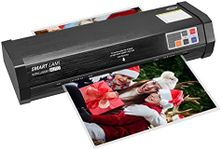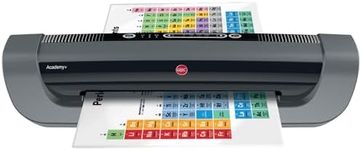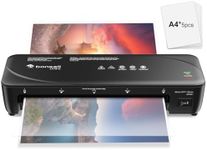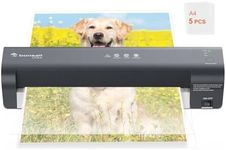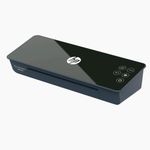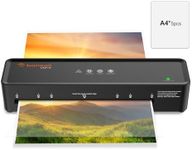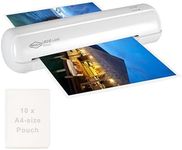Buying Guide for the Best Laminator Machine
When choosing a laminator machine, it's important to consider the types of projects you'll be working on, the frequency of use, and the materials you'll be laminating. Laminators are versatile tools that can protect documents, create durable teaching aids, and preserve important papers. Understanding the key specifications will help you select a laminator that meets your needs effectively.Laminating WidthLaminating width refers to the maximum width of the document that the machine can handle. This is important because it determines the size of the materials you can laminate. Laminators typically come in widths ranging from 9 inches to 27 inches or more. For standard letter-sized documents, a 9-inch laminator is sufficient. If you plan to laminate larger items like posters or banners, consider a wider model. Choose a laminator width based on the largest size you anticipate needing to laminate.
Laminating SpeedLaminating speed is the rate at which the machine can laminate documents, usually measured in inches per minute. This is important for efficiency, especially if you have a large volume of documents to laminate. Speeds can range from about 9 inches per minute to over 50 inches per minute. For occasional use, a slower speed may be adequate, but for frequent or high-volume laminating, a faster speed will save time and increase productivity. Consider how often and how much you plan to laminate when deciding on the speed.
Warm-Up TimeWarm-up time is the duration it takes for the laminator to be ready for use after being turned on. This is important for convenience and efficiency, especially in busy environments. Warm-up times can vary from 1 minute to 10 minutes or more. If you need to laminate quickly or frequently, a machine with a shorter warm-up time is preferable. For occasional use, a longer warm-up time might not be a significant issue. Think about how quickly you need to start laminating when choosing a machine.
Pouch ThicknessPouch thickness refers to the thickness of the laminating pouches the machine can handle, measured in mils (thousandths of an inch). This is important for the durability and rigidity of the laminated document. Common thicknesses range from 3 mil to 10 mil. Thicker pouches provide more protection and rigidity, suitable for items that need to be handled frequently. If you are laminating items for occasional use or display, thinner pouches may suffice. Consider the level of protection you need for your documents when selecting pouch thickness compatibility.
Temperature SettingsTemperature settings allow you to adjust the heat level for different types of laminating pouches and materials. This is important for achieving the best results and preventing damage to the documents. Some laminators have fixed settings, while others offer adjustable temperatures. If you plan to laminate a variety of materials, including heat-sensitive items, a machine with adjustable temperature settings is beneficial. Choose a laminator with the appropriate temperature flexibility based on the types of materials you will be laminating.
Reverse FunctionThe reverse function allows you to reverse the direction of the rollers to clear jams or remove misfed documents. This is important for preventing damage to both the machine and the documents. Not all laminators have this feature, but it can be very useful, especially for beginners or in environments where the machine is used frequently. If you want to minimize the risk of jams and ensure easy operation, consider a laminator with a reverse function.


